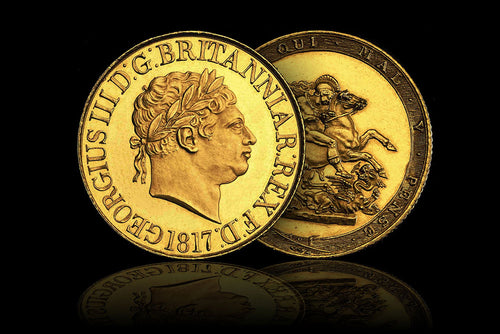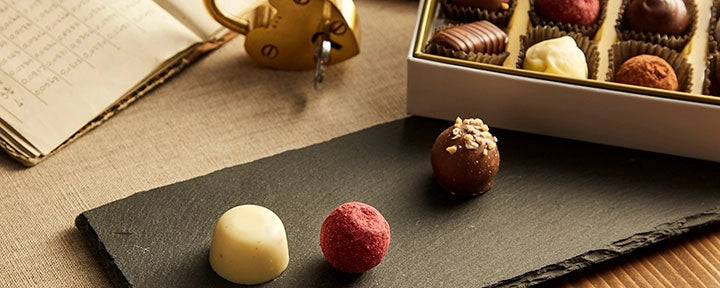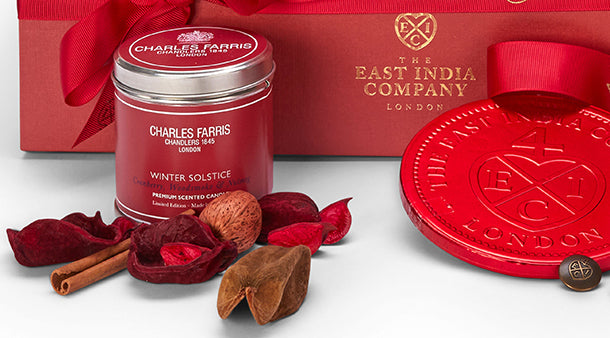
St George & the Dragon
The tale of good overcoming evil that inspired two masterpieces
St George & the Dragon has graced British numismatics for over two centuries. First appearing in 1821 on the newly introduced Sovereign specification, the story of Benedetto Pistrucci’s neoclassical depiction of this iconic pairing uncovers a fascinating rivalry between an older, more experienced master craftsman, Pistrucci, and an ambitious young upcoming talent, William Wyon.
William Wyon is widely regarded as one of history’s great coin designers; along with Benedetto Pistrucci he is perhaps the defining engraver of the 19th Century. Born in Birmingham, England in 1795, his father Peter was an engraver of medals and coins, his uncle Thomas a die engraver, and his cousin Thomas Wyon The Younger held the position of Chief Engraver at The Royal Mint from 1815 until his death in 1817. So it was perhaps inevitable that young William would pursue a career in the coin industry too.

In 1816 Wyon took the position of Assistant Engraver at The Royal Mint and used a competition to design new coins for the Great Recoinage as his chance to showcase his talents. His submission, The Three Graces, lost out to a design entered by the great Benedetto Pistrucci.
Older and more experienced, Pistrucci, had been born in Rome in 1783 and was already a well-established and respected engraver, with a fame which spread across Europe. As legend goes, Pistrucci’s was paid 100 guineas to create a jasper cameo of his legendary St George design which was to ultimately defeat Wyon’s Three Graces in the race to create a new coinage for Britain.
So began a period of rivalry between Wyon and Pistrucci, both men looking to out-do each other with Wyon’s calm, understated personality a contrast to Pistrucci’s more impulsive, tempestuous nature. The rivalry was finally eased in 1828 when the Master of the Mint, George Tierney, found roles that would make the most of both men’s’ skills; Pistrucci was made Chief Medallist while William was appointed to the position of Chief Engraver.
St George & the Dragon
The tale of good overcoming evil that inspired two masterpieces
The legend of St George & the Dragon became popular in the 12th Century and has long become a tale symbolising good overcoming evil. With its roots in the Middle Ages, a young knight finds a village under siege by a ferocious dragon. With the King’s princess taken by the dragon and to be sacrificed the next day, the King promises the knight his daughter’s hand in marriage if he can free her from this terrible fate.
The noble knight set out on a journey to find the dragon. Finding him near a lake, George and the dragon embark in a terrible battle, the dragon’s tough scales providing it with an almost impenetrable defence. With perseverance and courage, George eventually defeats his foe and returns to the village a hero.

St George & the Dragon
Pistrucci Vs Wyon
BENEDETTO PISTRUCCI (1783 – 1855)
Pistrucci’s interpretation of this iconic legend first appeared in 1821 on a new specification to replace the Guinea, known as the Sovereign. Now possibly one of Britain’s most recognisable coin designs, his neoclassical approach was said to have been inspired by a request from Lady Spencer to commission a version of Nathaniel Marchants St George and the Dragon in a Greek style for her husbands regalia.

Pistrucci’s design was eventually presented to the Master of the Mint, William Wellesley-Pole who was greatly impressed by its quality. Pole, who was at the time preparing to reissue Britain’s coinage in the Great Recoinage of 1816, proposed the design to appear on a reintroduced gold coin specification to replace the now redundant Guinea - the Sovereign.
WILLIAM WYON (1795 – 1851)
After creating the famous ‘Young Head’ portrait of Queen Victoria in 1838 which was so well liked by the young queen, it was to grace her coins for nearly 50 years, William Wyon went on to create some of the most beautiful Victorian coins of the era. In 1844, Wyon a favourite of the queen and her husband, Prince Albert, was commissioned to create a personal medal for him.
Wyon’s created a design full of dynamic energy as St George slays the mighty dragon beneath his rearing steed, believed to have been modelled upon Prince Albert’s favourite horse, ‘Imaun’.
Prince Albert known most famously as a Patron of the Arts, had become the President of the Society of Arts in 1843. Encouraged by society member and close friend of Albert’s, Henry Cole, Albert supported a movement to hold a ‘Great Exhibition’ in London to celebrate ingenuity and brilliance from across the globe.

The exhibition ran from May to October 1851 and was housed in a purpose built Crystal Palace in Hyde Park. As the first international exhibition of its kind, it showcased manufactured goods from Britain and across the empire. Six million people were estimated to have visited the exhibition, the equivalent of one-third of the British population.

The exhibition was considered a huge success and Prince Albert awarded Henry Cole, amongst a few select others, a set of seven presentation sets of medals each one containing one of Wyon’s St George & the Dragon Masterpieces.

In 2023 we celebrate this design for the first time on a coin in our highly acclaimed Masterpiece Collection as the final design in the Wyon’s series. Explore the 2023 tribute piece and appreciate Wyon’s interpretation of this magnificent scene.




 Ceylon / Sri Lanka
Ceylon / Sri Lanka Assam, India
Assam, India Japan
Japan Taiwan
Taiwan Nepal
Nepal China
China Kenya
Kenya Egypt
Egypt South Africa
South Africa


